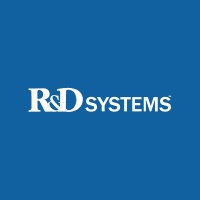RANTES Monoclonal / Alexa Fluor 488 / 21445
Product Details
| Description | Human CCL5/RANTES Alexa Fluor 488-conjugated Antibody | |
|---|---|---|
| Conjugate | Alexa Fluor 488 | |
| Clone | 21445 | |
| Target Species | Human | |
| Applications | ICS | |
| Supplier | R&D Systems | |
| Catalog # | Sign in to view product details, citations, and spectra | |
| Size | ||
| Price | ||
| Antigen | ||
| Host | ||
| Isotype |
About RANTES
This gene is one of several chemokine genes clustered on the q-arm of chromosome 17. Chemokines form a superfamily of secreted proteins involved in immunoregulatory and inflammatory processes. The superfamily is divided into four subfamilies based on the arrangement of the N-terminal cysteine residues of the mature peptide. This chemokine, a member of the CC subfamily, functions as a chemoattractant for blood monocytes, memory T helper cells and eosinophils. It causes the release of histamine from basophils and activates eosinophils. This cytokine is one of the major HIV-suppressive factors produced by CD8+ cells. It functions as one of the natural ligands for the chemokine receptor chemokine (C-C motif) receptor 5 (CCR5), and it suppresses in vitro replication of the R5 strains of HIV-1, which use CCR5 as a coreceptor. Alternative splicing results in multiple transcript variants that encode different isoforms. [provided by RefSeq, Jul 2013]
This gene is one of several chemokine genes clustered on the q-arm of chromosome 17. Chemokines form a superfamily of secreted proteins involved in immunoregulatory and inflammatory processes. The superfamily is divided into four subfamilies based on the arrangement of the N-terminal cysteine residues of the mature peptide. This chemokine, a member of the CC subfamily, functions as a chemoattractant for blood monocytes, memory T helper cells and eosinophils. It causes the release of histamine from basophils and activates eosinophils. This cytokine is one of the major HIV-suppressive factors produced by CD8+ cells. It functions as one of the natural ligands for the chemokine receptor chemokine (C-C motif) receptor 5 (CCR5), and it suppresses in vitro replication of the R5 strains of HIV-1, which use CCR5 as a coreceptor. Alternative splicing results in multiple transcript variants that encode different isoforms. [provided by RefSeq, Jul 2013]
About Alexa Fluor 488
Alexa Fluor™ 488 (AF488, Alexa 488) has an excitation peak at 488 nm and an emission peak at 496 nm, and is considered a high-performance alternative to FITC. Alexa 488 is one of the most popular Alexa Fluor™ dyes and is widely used in Fluorescence Microscopy, flow cytometry, and for staining low expression markers. It is bright, highly photostable, resistant to pH changes, and less susceptible to photobleaching. Alexa 488 and is similar in size, brightness and application to DyLight™ 488, iFluor® 488 and CF®488A.
Alexa Fluor™ 488 (AF488, Alexa 488) has an excitation peak at 488 nm and an emission peak at 496 nm, and is considered a high-performance alternative to FITC. Alexa 488 is one of the most popular Alexa Fluor™ dyes and is widely used in Fluorescence Microscopy, flow cytometry, and for staining low expression markers. It is bright, highly photostable, resistant to pH changes, and less susceptible to photobleaching. Alexa 488 and is similar in size, brightness and application to DyLight™ 488, iFluor® 488 and CF®488A.
Experiment Design Tools
Panel Builders
Looking to design a Microscopy or Flow Cytometry experiment?
Validation References
Reviews & Ratings
| Reviews |
|---|
Looking for more options?
822 RANTES antibodies from over 27 suppliers available with over 46 conjugates.





